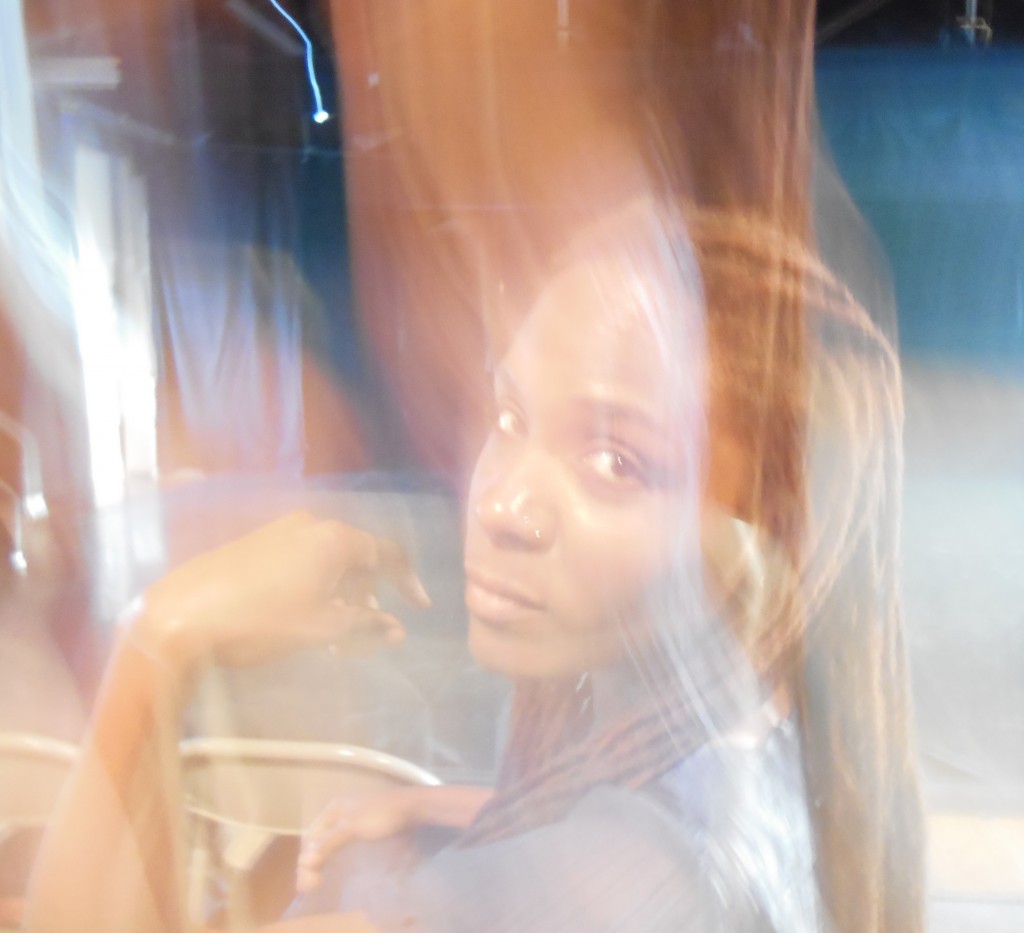
Monica Brown
I came to Columbia College Chicago to expand my creative repertoire and break self-imposed barriers and boundaries. Through the courses that I have taken in this Interdisciplinary Arts MA program so far, I have learned to dance with words, manipulate sound, and write my physical body and presence into my work. I’m excited about how this next year at Columbia will no doubt continue to feed my muse, and I am looking forward to sharing my experiences with you.
Tell us a little bit about what you were doing before you came to Columbia.
Before I came to Columbia, I was making visual art (mostly painting and drawing) and exhibiting my work, nationally and throughout Chicago, at places including: Chicago State University; Hyde Park Art Center; Museum of Science and Industry; DuSable Museum of African American History; Indianapolis Art Center; and the National Black Arts Festival in Atlanta.
Working as a volunteer artist mentor with the Hubbard Street Mural Project, I designed and created two murals. I also led art workshops at ArtScape Chicago and through Integrity: Arts & Culture Association.
My artwork is in the collections of Harold Washington College and the Lillian E. Smith Center for Creative Arts, and I have been the recipient of Illinois Arts Council Grants. I was awarded the Harold Washington College, President’s Purchase Award, and an African-American Alliance Achievement Award. I have been an artist-in-residence at The Lillian E. Smith Center for Creative Arts and Ragdale.
In the years between completing my BFA and coming to Columbia, I had also been taking movement classes, writing (journaling, poetry, and short stories), teaching yoga, and working as a Thai bodywork and Shiatsu therapist. I knew that all of these things (including my visual art) were intrinsically tied together and part of a cohesive whole. What do bodywork and yoga have to do with art-making? For me, they are connected in that they are all concerned with moving what is within, without. They can be forms of excavation, unifying our inner and outer worlds. The manipulation of muscle memory, through the modalities of yoga and bodywork, facilitates in the formation of a mental and emotional connection between how our stored memories of life’s experiences affect the way in which we perceive and move through the world, the ways in which we identify ourselves.
Why did you choose Columbia for your graduate study?
I had been searching for a Master’s program for several years, at first looking at programs to build upon my BFA in Painting from Otis College of Art & Design. Although I was continually expanding upon the ways that I was creative, I had still somehow trapped myself in a creative box, feeling like I wasn’t truly making art if I wasn’t making visual art, and even more specifically – painting. In some ways I felt stuck, like I had gone as far as I could with the tools that I had and needed to expand upon the other ways in which I had already been expressing myself, while adding new tools to the box. So, when I saw the curriculum for the Interdisciplinary Arts MA program at Columbia, it naturally felt like a perfect fit, confirming for me “the concept that the arts are not separate ‘disciplines’ but a unified field of endeavor.” * It was an “epiphany” that I could be a multi-disciplinary artist and remove the self-confining label of “painter.”
*from the course description of History of Interdisciplinary Arts
Tell us about a project you’re working on that you’re excited about.
Much of my work tends to be about origins in one form or another, and I am concerned with the stories that we choose to tell ourselves about these origins. These stories of our personal history, which live in our bodies, the stories of our ancestry, which we carry in our DNA, and/or the stories about our human genesis (unless we are aware of their subconscious influence) can dictate and shape the way in which we view the world and our place within it. Our identity can be shaped by the subsequent labels we choose. I have been tracing my way back through my matrilineage with an inquiry into discovering that which is gained and/or lost through generations of women, passed down from mother to daughter through genetic memory, bloodlines, and dreamscapes. Through re/dis/covering their stories, I am reshaping my own. This investigation manifests through poetry, prose, sound compilations, performance, and visual art.
